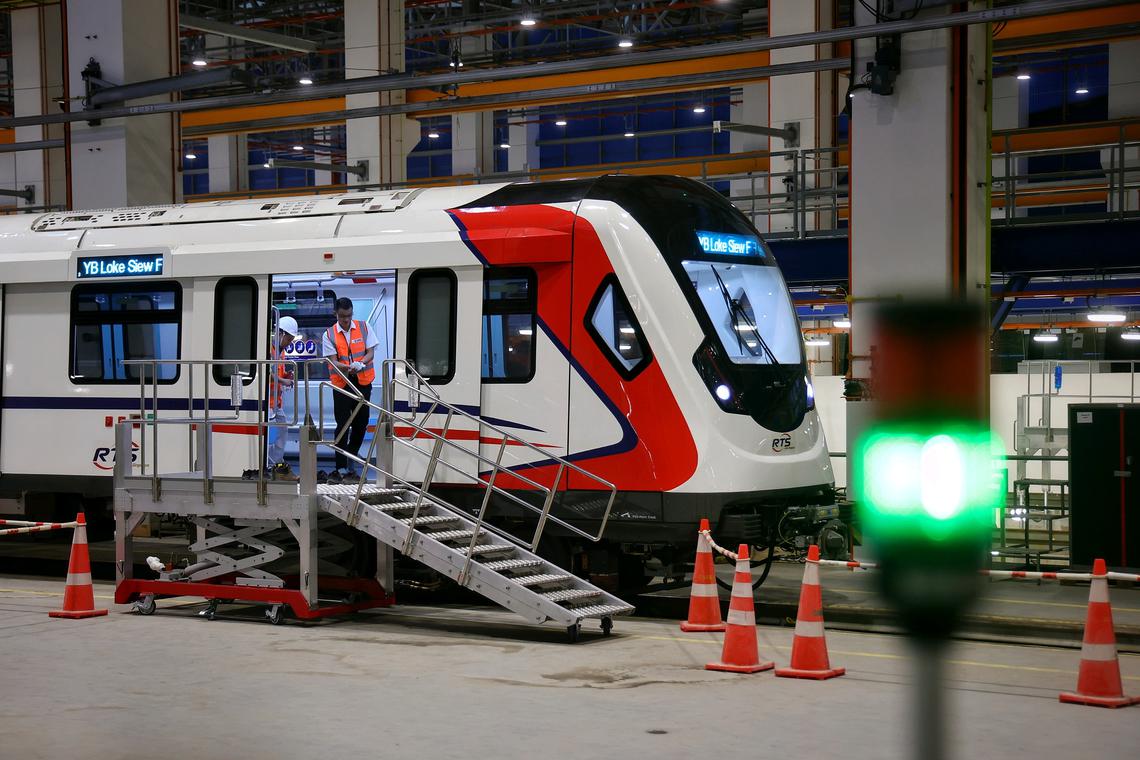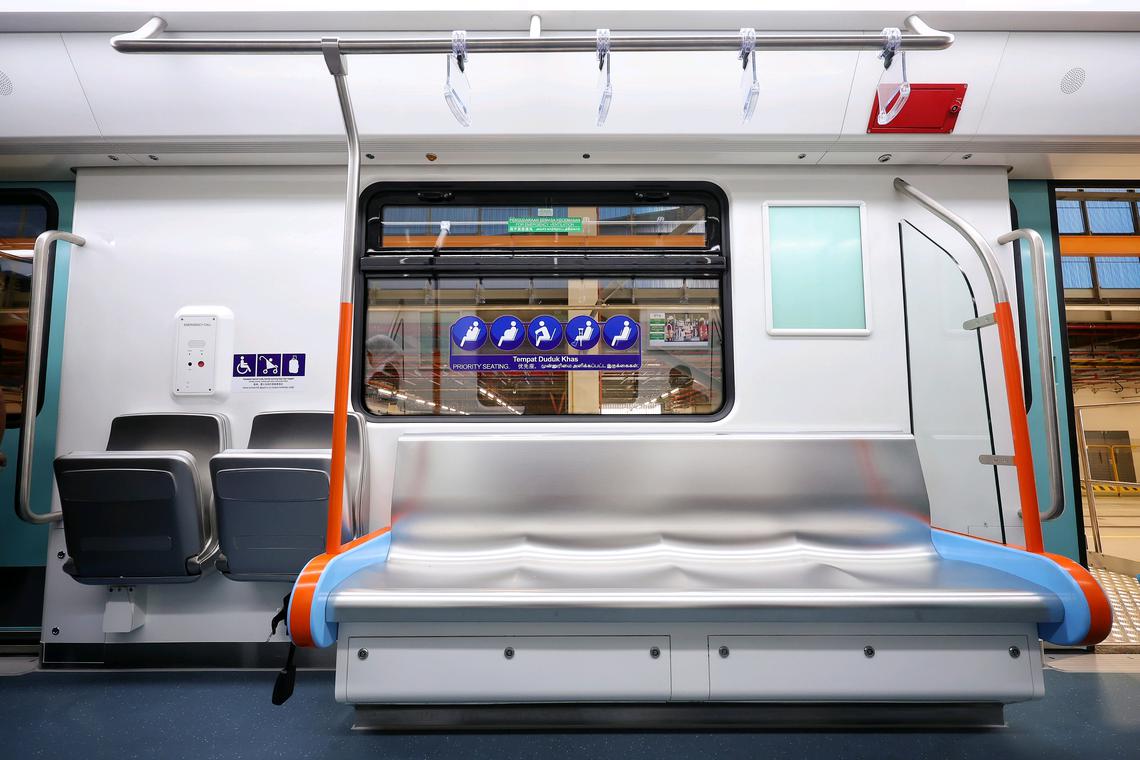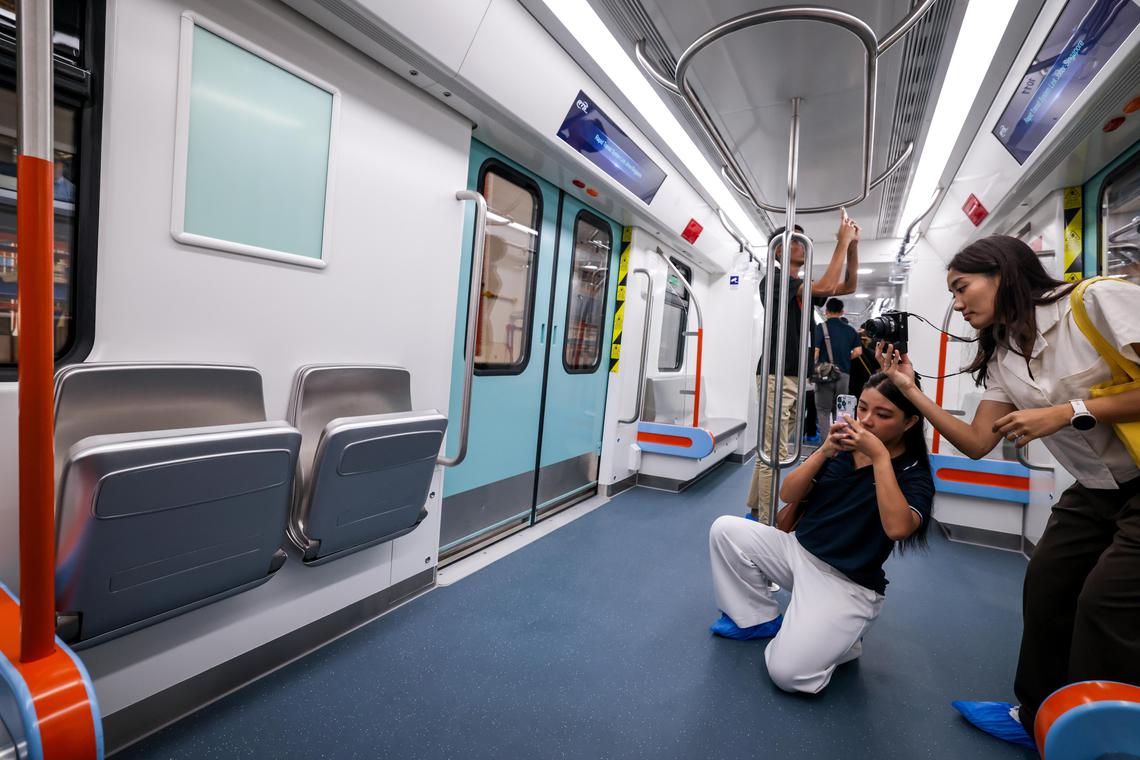
Reservation booth:+86(0)21-3114 8748
Visit/media contact:+8613601815988
QQ:2463282767
email:artsexpo@sgexpo.cn
On June 30, 2025, the first driverless train that will serve the Xinjou Metro has successfully arrived in Singapore, and will start construction at a cost of S$800 million in JulyThe Singapore Railway Test Centre (SRTC) conducts a full test.

This marks another important step in this much-talked-about cross-border rail project. The line is seen as an important engine for Singapore-Malaysia connectivity and regional economic growth, and is expected to be officially put into passenger service by the end of 2026.

The first train was unveiled, and dignitaries from many countries attended the ceremony
To celebrate the arrival of the train, a commemorative event was held at the Singapore Railway Test Centre on 30 June. The ceremony was attended by Acting Transport Minister Jeffrey Siow, Malaysian Transport Minister Anthony Loke and Johor Menteri Besar Onn Hafiz Ghazi.

RTS Operating Company (RTSO) Chairman Datuk Khairil Anwar Ahmad said, "RTS is more than just a traffic project, it is a milestone symbol of the deepening partnership between Singapore and Malaysia. ”
To date, the installation of the RTS Link system is about 56% complete, including the laying of the track and the installation of the traction power supply system, and the track works are expected to be completed by the end of July.

The trains are manufactured by CRRC Zhuzhou Locomotive Co., Ltd. and are eight trains in total. Each train has a total length of 76.5 meters and consists of 4 carriages, with a maximum capacity of 1,087 people in a single train, with an optimal passenger capacity of 607.
Each carriage is equipped with 32 seats, 4 of which are foldable and can be used for wheelchairs, strollers or large luggage. The train is also equipped with a hearing aid induction ring system, which is the first in the Singapore-Malaysia railway system, which can directly transmit voice broadcasts to the hearing aids of hearing-impaired passengers through magnetic fields, significantly improving their accessibility.
The carriage is equipped with an emergency button and a red escape lever, passengers can open the door to escape when the train is stopped, and the system will send an alarm to the control center. The cabins are also fitted with smoke and fire detectors, as well as openable ventilation windows to keep air circulating.

Train testing and delivery planning
The train is expected to complete compatibility testing with signaling systems, platform doors, and other systems in the fourth quarter of 2025. It will then be transferred to the RTS's dedicated line – between Singapore's Woodlands North Station and Malaysia's Bukit Chaka Station – for a full simulation test that is expected to run until the third quarter of 2026.
The remaining four trains are currently being assembled at the CRRC plant in Batu Gajah, Perak, Malaysia, where the remaining three trains will also be completed. Once all trains are delivered, they will be transported to the Wadi Hana depot in Johor Bahru for final testing.
When completed, the RTS Link will operate at speeds of up to 80 km/h and carry up to 10,000 passengers per hour in one direction. Trains will operate daily from 6 a.m. to midnight, with departures every 3.6 minutes during peak hours and approximately 5 minutes each way.

The train manufacturing contract was awarded to CRRC in 2021. It was originally planned to be connected to Singapore's Thomson-East Coast Line, but the project was suspended in 2019 at the request of the Malaysian side and the Malaysian side wanted to adopt a light rail system to reduce costs, and finally the project was restarted in July 2020 under the revised plan.
Once the project is opened to traffic, it is expected to significantly alleviate the pressure on the customs clearance of the Xinjo Long Causeway, which is more than 300,000 people per day.
Rail Transit Exhibition Booth Reservation
Rail Transit Exhibition Free registration for visit